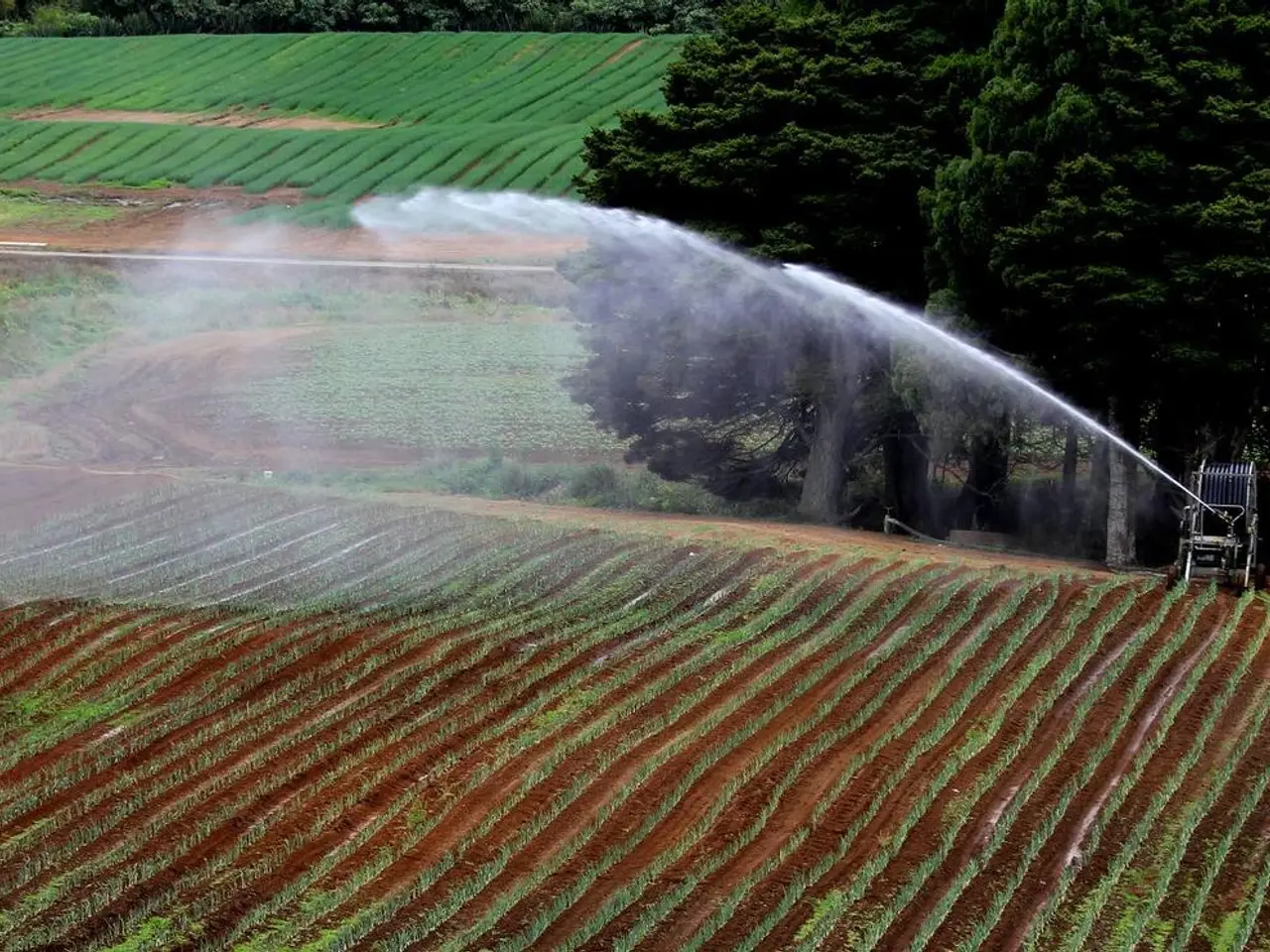Expanded Food Forest Planning: Craft Your Own Edible Landscape
In the quest for sustainable food production, the world of permaculture continues to evolve, blending traditional ecological principles with cutting-edge technology. This transformation is particularly evident in the realm of food forest design.
At the heart of permaculture lies a commitment to three core ethics: Care for the Earth, Care for People, and Fair Share. These ethics guide the practices, from sustainable agriculture to composting and green manures, agroforestry and polycultures, and even organic pest control.
One of the key concepts in permaculture is polycultures and diversity, which promotes biodiversity by using many plant species and functions. This diversity not only enhances the aesthetic appeal of food forests but also fosters a balanced ecosystem, aiding in pest control, and improving soil health.
Swale design, a method used in food forest layout, helps slow down water, prevent erosion, and recharge groundwater. Designers use special methods to place swales and ponds based on the land's slope, soil, and rainfall, ensuring a water-efficient and resilient food forest.
Companion planting is another core part of food forest design. By pairing plants that help each other through sharing resources, controlling pests, or balancing the ecosystem, the productivity and sustainability of food forests are significantly improved.
As the field advances, emerging trends emphasize the integration of high-tech tools like drones and satellite imagery, AI-driven land classification, and real-time data analytics with traditional ecological principles. These technologies enable more precise, adaptive, and socially integrated regenerative landscapes.
Advanced mapping technologies, such as the use of drones equipped with smartphones and satellite data APIs, create fine-scale, accurate maps of permaculture sites and food forests. These maps capture landscape structure, soil conditions, and vegetative health, aiding in precise planning and monitoring.
AI-powered platforms classify land types, enabling tailored design interventions that optimize water use, soil health, and biodiversity. This dynamic land classification and monitoring further enhance resource management, improve biodiversity planning, and increase soil health.
In urban areas, where two-thirds of the world's population will live by 2050, advanced permaculture mapping helps create food forests that can thrive. Thorough site analysis, including soil testing and microclimate evaluation, is essential for a thriving food forest. Case studies of successful food forests worldwide and locally show the value of matching permaculture ideas with real-world needs and challenges.
The latest trends in advanced permaculture mapping and food forest design also emphasize community-centered and social innovation. Models such as the TreeMap support group dynamics and regenerative culture-building, linking social networks with landscape planning to strengthen community engagement in permaculture projects.
Moreover, the integration of water efficiency technologies like moisture sensors and drip irrigation with permaculture design helps conserve resources and build resilience to climate variability. This climate-smart and regenerative design further enhances climate resilience and resource conservation.
Finally, the use of 3D modeling software in food forest planning enhances the process by allowing designers to visualize and test layouts, including experimenting with plant placement and water systems. Zone and Sector Analysis, a permaculture concept that helps organize zones and analyze sectors to use natural forces effectively, is also integral to this process.
In sum, the forefront of permaculture mapping and food forest design is characterized by a synergistic application of modern geospatial technologies and AI-driven analytics with ecological and social principles, enabling more precise, adaptive, and socially integrated regenerative landscapes.
- The commitment to care for the Earth in permaculture extends to sustainable practices like composting and green manures, which enrich soil health.
- Biodiversity is promoted in permaculture through strategies like polycultures and diversity, which use numerous plant species to foster a balanced ecosystem.
- Water management is crucial in permaculture, with methods like swale design slowing down water, preventing erosion, and recharging groundwater.
- Design principles in permaculture favor companion planting, pairing plants for mutual benefits in terms of resources sharing, pest control, and ecosystem balancing.
- High-tech tools like drones, satellite imagery, and AI-driven land classification are integrated with traditional ecological principles to create more precise, adaptive, and socially integrated regenerative landscapes.
- Advanced mapping technologies help capture landscape structure, soil conditions, and vegetative health for more effective planning and monitoring.
- A tailored design approach uses AI-powered platforms to classify land types for optimized resource management, biodiversity planning, and improved soil health.
- In urban areas, advancing permaculture mapping and food forest design cater to specific needs and challenges, creating thriving food forests that can benefit communities.
- The use of community-centered models, like TreeMap, links social networks with landscape planning to strengthen community engagement in permaculture projects, fostering regenerative culture-building.




